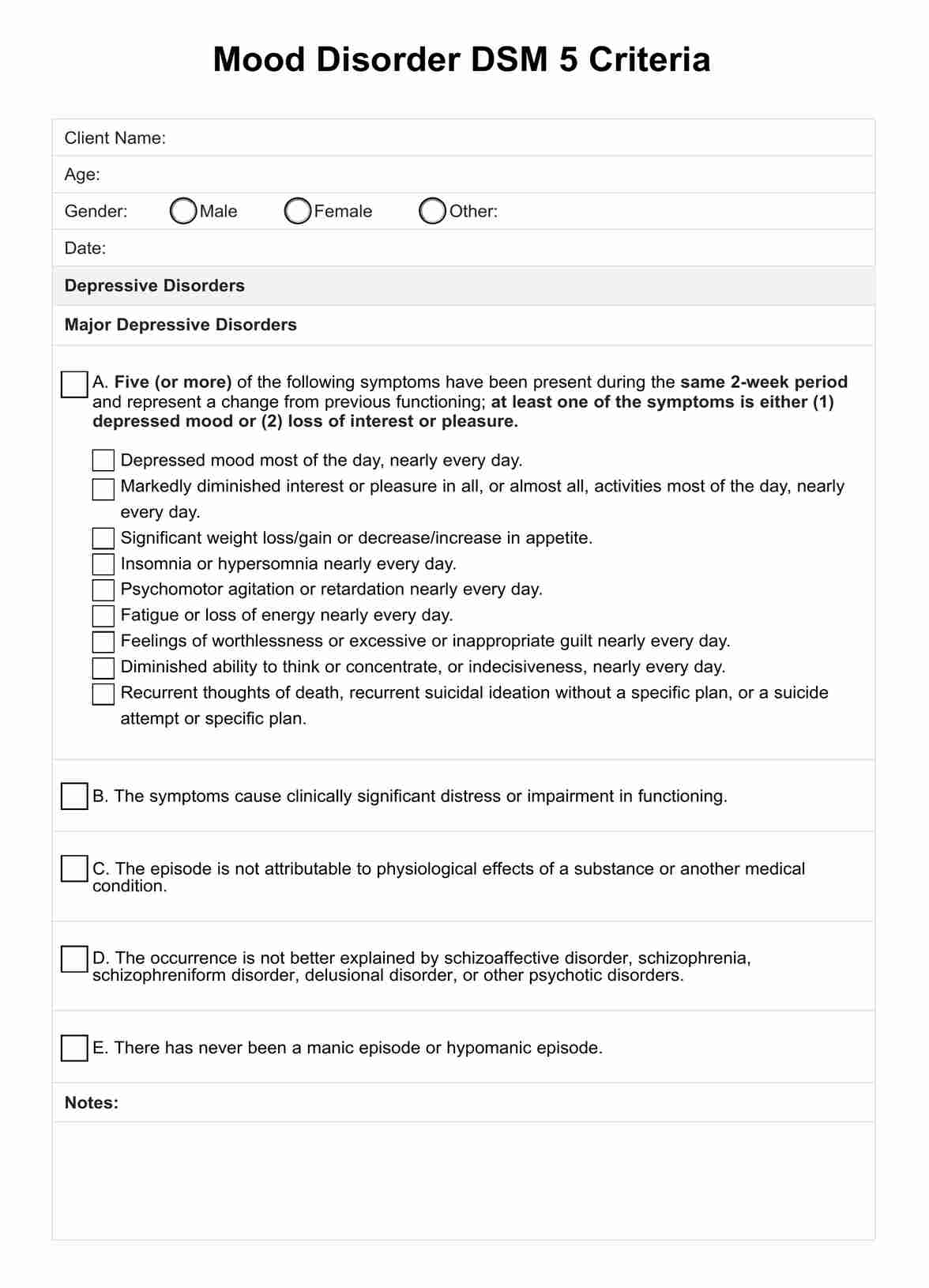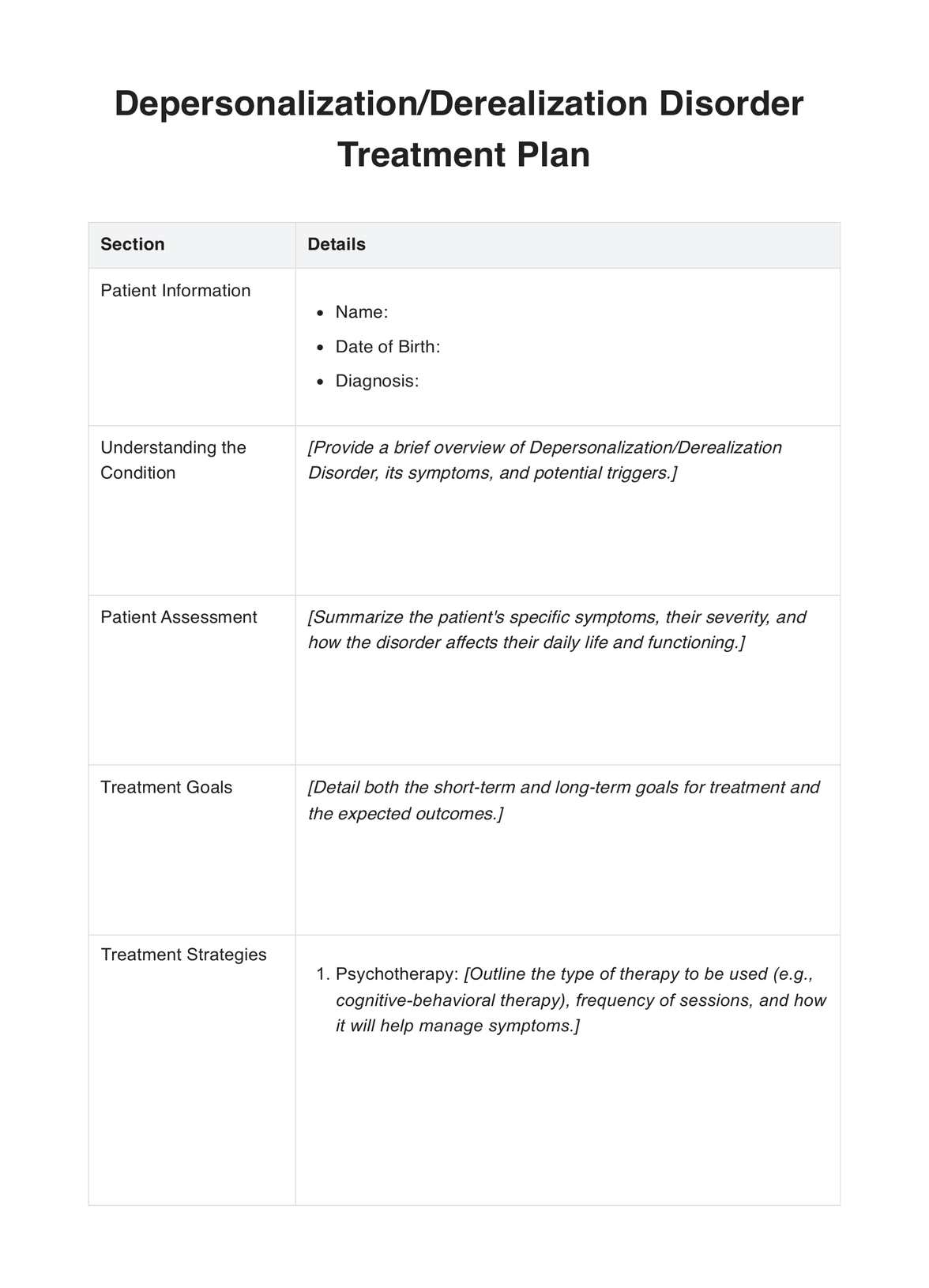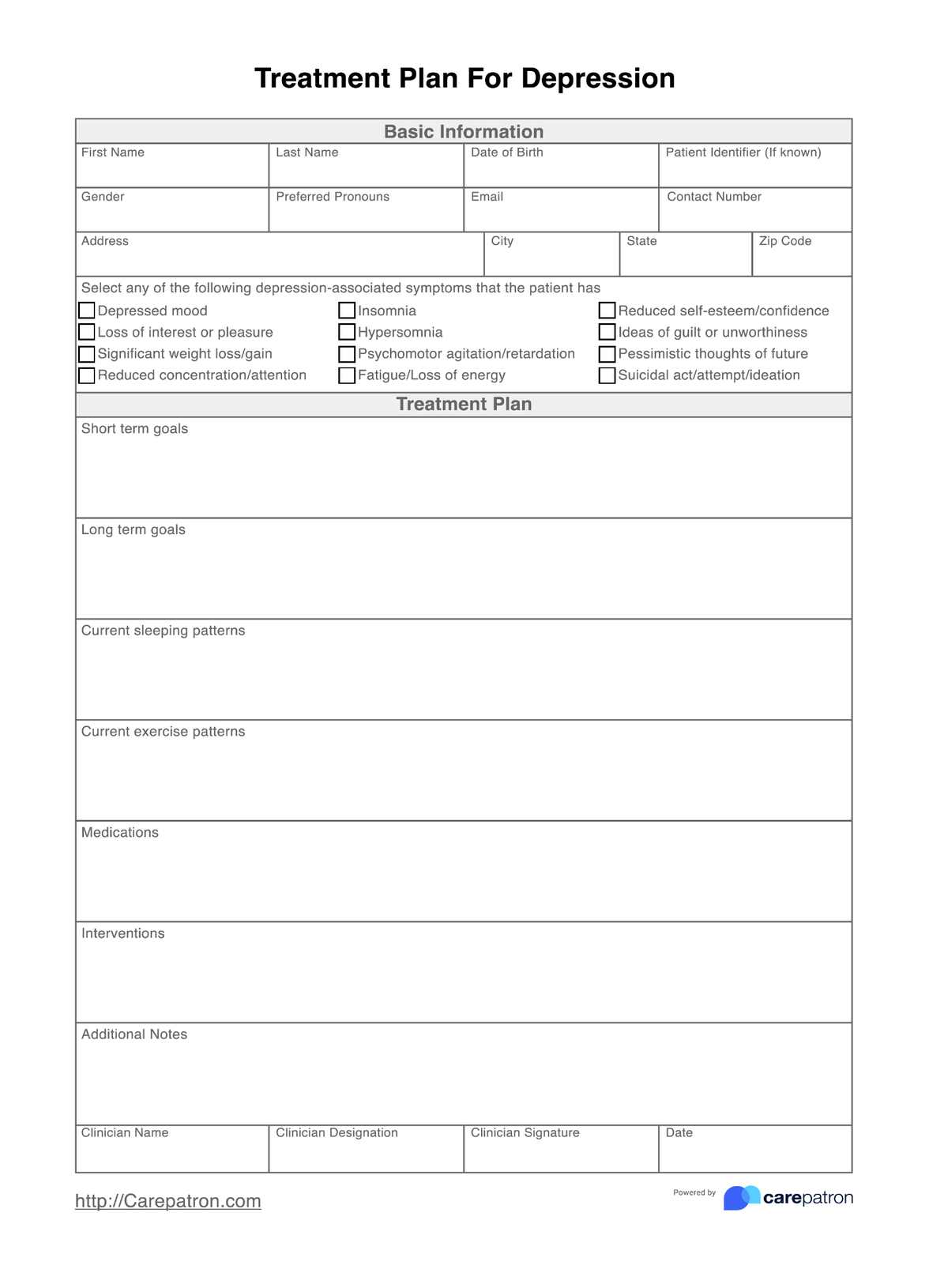Stop Think Act Worksheet
Empower your clients with our Stop-Think-Act Worksheet, designed to enhance emotional regulation and thoughtful decision-making in challenging situations.


What is emotional regulation?
Emotional regulation refers to the process by which individuals influence their emotions: how they experience, express, and manage them. This capability is crucial for adapting to various life situations and maintaining psychological well-being. Emotional regulation isn't just about emotional control; it involves recognizing, processing, and adjusting emotional responses in a way that is beneficial and appropriate for the context.
The concept of emotional regulation is rooted in the broader field of affective science and has been significantly developed over the years through various psychological theories and research. Historically, the study of emotional regulation can be traced back to the early 20th century, but it gained significant traction in the 1980s with the advent of cognitive psychology, which highlighted the interplay between thoughts, emotions, and behaviors.
Emotional regulation is crucial from an early age, as it significantly impacts children's executive functioning skills, social interactions, learning ability, and overall resilience. As children learn to manage their emotions, they become better equipped to handle conflicts, increase impulse control, and build strong social bonds. This foundational skill set not only facilitates smoother developmental transitions but also lays the groundwork for emotional stability and social competence in adulthood.
For adults, mastering emotional regulation is vital for maintaining healthy personal and professional relationships, enhancing conversation skills, managing stress effectively, and achieving psychological well-being. Well-regulated emotions contribute to better decision-making, higher productivity, and improved mental health, making emotional regulation a lifelong valuable skill.
Stop Think Act Worksheet Template
Stop Think Act Worksheet Example
What is the stop-think-act method?
The stop-think-act method is a simple yet effective technique used to manage immediate emotional responses in stressful or triggering situations. This method encourages individuals to pause and reflect before reacting, allowing them to make more deliberate and thoughtful decisions.
Simply put, the stop-think-act method helps users break down their decision-making process into manageable steps, fostering more mindful reactions to challenging situations.
Stop
The first step involves halting any immediate reactions to an emotional trigger. This pause is critical as it creates space for rational thought, preventing knee-jerk responses that might later be regretted.
Think
During this phase, individuals assess the situation more carefully and practice flexible thinking. They consider various aspects, such as the feelings of all parties involved, potential outcomes of different responses, and alignment with long-term goals. This step promotes a deeper understanding of the situation and helps in developing empathy and foresight, and enhances working memory by requiring recall and application of different strategies.
Act
Finally, after a careful evaluation, the individual selects the most constructive and appropriate action to take. This action is based on reasoned decision-making rather than emotion-driven responses, leading to more effective and positive outcomes.
By methodically processing through these steps, users can learn to control impulsive behaviors, reflect on their feelings and thoughts, and make deliberate, considerate choices that align with their values and objectives. These are central to helping kids develop emotional control.
What is a Stop-Think-Act Worksheet?
The Stop-Think-Act Worksheet is an instrumental tool designed to help individuals practice and master the Stop-Think-Act method. As a worksheet, it is not a real-time guide during moments of stress, but a preparatory tool in a controlled environment, allowing users to rehearse and refine their responses before facing actual situations.
Our Stop-Think-Act Worksheet contains a structured sequence of easy-to-understand prompts that can teach children and adult users through a reflective and active problem-solving process. The worksheet can help users simulate challenging scenarios, helping them practice the steps of stopping to halt their initial reactions, thinking through the emotions and thoughts involved, and then acting on the most reasoned and beneficial decision.
Goals of this worksheet
The goals of the Stop-Think-Act Worksheet are comprehensive, aiming to equip users with essential emotional and cognitive skills:
- Enhance self-awareness: Users become more aware of their immediate reactions and the underlying emotions and thoughts that influence these reactions.
- Improve decision-making: The worksheet promotes careful consideration of all possible actions and their consequences, aiding in the development of prudent decision-making abilities.
- Develop emotional regulation: Regular practice with the worksheet trains users to pause and think before acting, a crucial skill in managing emotional responses effectively.
- Strengthen problem-solving skills: By evaluating different responses and their outcomes, users enhance their ability to approach problems logically and resolve conflicts positively.
- Facilitate rehearsal in a safe environment: The worksheet allows individuals to practice the Stop-Think-Act method in a non-threatening environment, preparing them to apply these skills effectively in real-life situations.
How to use our Stop-Think-Act Worksheet template
To effectively use our Stop-Think-Act Worksheet template, mental health professionals can follow these detailed steps to guide their patients, ensuring a comprehensive understanding and application of the method:
Step 1: Access this template
For health professionals, the initial step is to download the Stop-Think-Act Worksheet template. You can access it via the Carepatron app or directly from our website’s Resource Library. Provide this template to your patients in a format that suits their needs—either digitally through our patient portal or in a printed version for in-person sessions.
Step 2: Explain the template
Before patients begin filling out the worksheet, clearly explain its purpose and how it can be utilized. Discuss the benefits of the Stop-Think-Act method, emphasizing its role in developing emotional regulation and decision-making skills. This discussion helps patients understand the importance of each step and how it can be applied in real-life situations.
Step 3: Guide the patient through the worksheet
Walk your patients through each section of the worksheet, ensuring they understand what is required at each stage:
- Describe the situation: Have them detail a recent event that triggered a strong emotional response.
- Stop: Instruct them to reflect on their initial reactions and to note these in the worksheet.
- Think: Help them analyze their feelings and thoughts, and brainstorm potential solutions or actions.
- Act: Encourage them to choose the most constructive action from their list, discuss how to implement it, and consider the potential outcomes.
Step 4: Provide additional support
After the patient has completed the worksheet, review their entries together. Provide feedback and additional support where necessary. This might include helping them refine their action steps, offering alternative strategies, or discussing how to apply these techniques more broadly in their daily life.
Step 5: Reflect on the outcome
This final step will happen only after the patient has had a chance to apply the Stop-Think-Act method in a real situation. Revisit the worksheet with them to discuss how it went. Explore what worked, what didn’t, and what they might do differently next time. This reflection is crucial for reinforcing the learning and ensuring continuous improvement.
By methodically guiding patients through these steps, mental health professionals can help them gain greater control over their reactions and foster more adaptive coping mechanisms, ultimately leading to better emotional well-being.
Benefits of using this worksheet
Using the Stop-Think-Act Worksheet provides distinct benefits that align with and extend the goals outlined earlier. Here’s how each benefit correlates with achieving these goals:
Enhanced decision-making in real-time situations
By practicing with the worksheet, individuals can apply the stop-think-act method effectively in real-time, leading to better choices when immediate decisions are necessary. This application enhances their ability to handle situations as they occur, directly reflecting the worksheet's goal of improving decision-making skills.
Habit formation
The worksheet aids in developing a consistent practice of pausing and considering actions before executing them. This practice can evolve into a habitual response, making thoughtful action a natural reflex in challenging situations. Achieving this consistency is a fundamental goal of the worksheet, aiming to instill long-lasting behavioral changes.
Increased resilience to stressful situations
Regular use of the worksheet or the habit it formed builds resilience by equipping users with strategies to manage stress more effectively. This benefit aligns with the goal of improving emotional regulation, as individuals become adept at handling stress without resorting to impulsive reactions.
Positive impact on academic and professional performance
As users master the stop-think-act process, they often see improvements in their academic and professional life. The method teaches them to approach tasks and challenges thoughtfully, which can lead to better performance and outcomes in these areas.
Each of these benefits is a testament to reaching the goals set forth by the worksheet, proving its effectiveness as a tool for personal development and emotional mastery.
Commonly asked questions
Stop-think-act is a strategy used to manage reactions by pausing to consider one's feelings and options before taking action, especially in emotionally charged situations.
The purpose of stop-think-act is to foster better decision-making and emotional regulation by encouraging thoughtful responses instead of impulsive reactions.
You can help students learn stop-and-think by guiding them through recognizing emotional triggers, evaluating their feelings and thoughts, and choosing rational responses before acting.


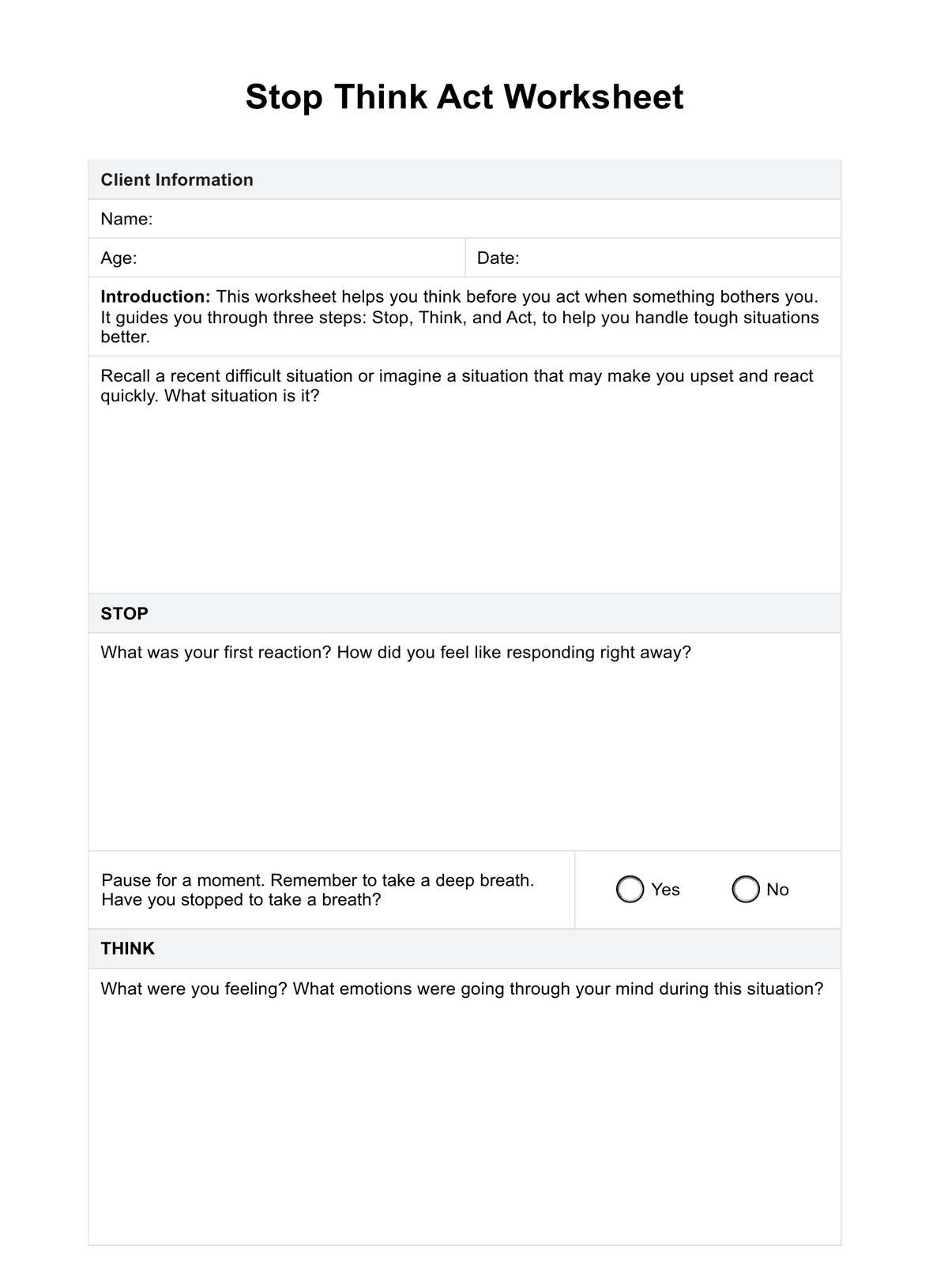
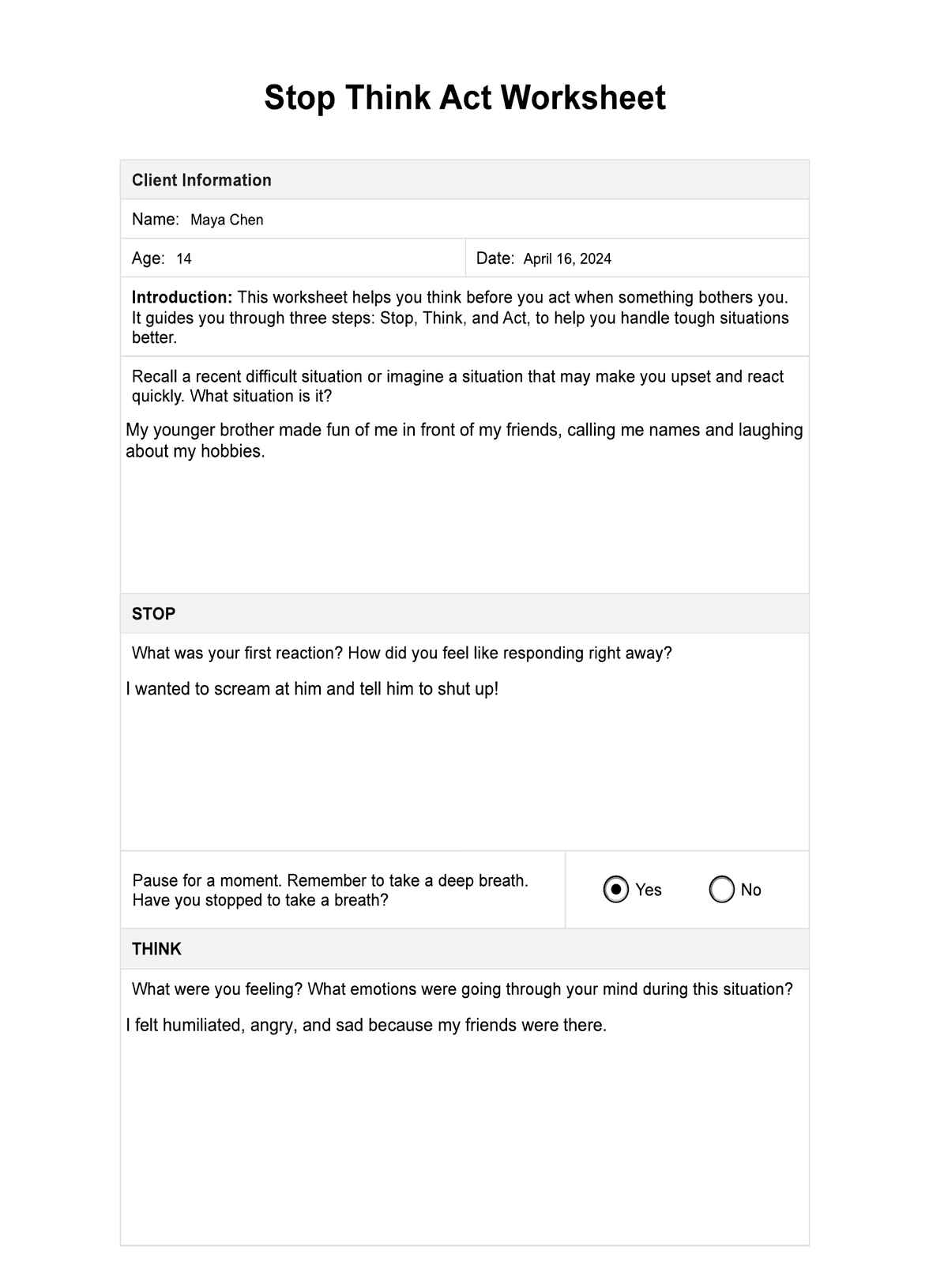

















-template.jpg)



















































































